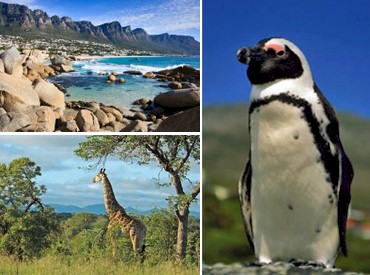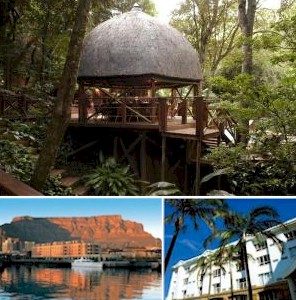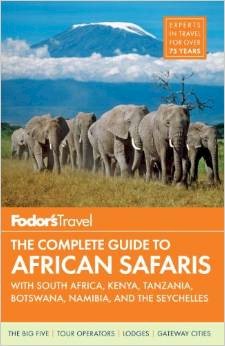« SOUTH AFRICA • Discover South Africa
Destination South Africa

South Africa South Africa has the largest population of people of European descent in Africa, the largest Indian population outside of Asia, as well as the largest Coloured community, making South Africa one of the most ethnically diverse countries on the continent.
| Discover magical South Africa … |
|---|
» Cape Town

Cape Town has several notable cultural attractions. The Victoria & Alfred Waterfront, built on top of part of the docks of the Port of Cape Town, is now one of the city's most popular shopping venues, with several hundred shops and the Two Oceans Aquarium. The Port continues to operate and visitors can watch ships enter and leave …
» see all Destination Cape Town, South Africa
» Durban

Archaeological evidence from the Drakensberg mountains suggests that the Durban area has been inhabited by communities of hunter-gatherers since 100,000 BC. These people lived throughout the area of present day KwaZulu-Natal until the expansion of Bantu farmers and pastoralists from the north saw their gradual displacement,incorporation or extermination… …
» see all Destination Durban, South Africa
» Johannesburg
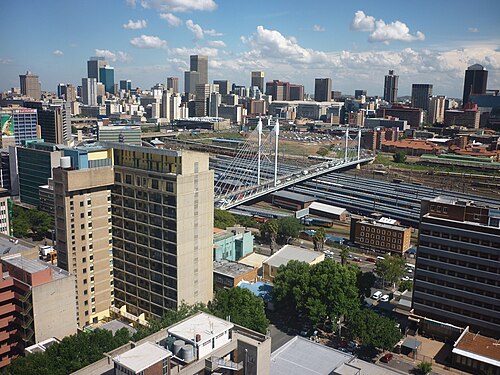
Johannesburg includes Soweto, which was a separate city from the late 1970s until the 1990s. Originally an acronym for 'SOuth-WEstern TOwnships', Soweto originated as a collection of settlements on the outskirts of Johannesburg populated mostly by native African workers in the gold-mining industry. Eventually incorporated into Johannesburg, the apartheid government separated Soweto from the rest of Johannesburg to make it an entirely black-residents area …
» see all Destination Johannesburg, South Africa
» Kruger National Park

Kruger National Park is one of the largest game reserves in Africa. It covers 19,485 square kilometres and extends 360 kilometres from north to south and 65 kilometres from east to west. To the west and south of the Kruger National Park are the two South African provinces of Limpopo and Mpumalanga. In the north is Zimbabwe, and to the east is Mozambique …
» see all Destination Kruger National Park
Provinces of South Africa
» Eastern Cape

The Eastern Cape gets progressively wetter from west to east. The west is mostly semi-arid Karoo, except in the far south, which is temperate rainforest in the Tsitsikamma region. The coast is generally rugged with interspersed beaches. Most of the province is hilly to very mountainous between Graaff-Reinet and Rhodes including the Sneeuberge (English: Snow Mountains), Stormberge, Winterberge and Drakensberg (English: Dragon Mountains) …
» Free State

The Free State is situated on flat boundless plains in the heart of South Africa. The rich soil and pleasant climate allow a thriving agricultural industry. With more than 30,000 farms, which produce over 70% of the country's grain, it is known locally as South Africa's breadbasket. The province is high-lying, with almost all land being 1,000 metres above sea level. The Drakensberg and Maluti Mountains foothills raise the terrain to over 2,000 m in the east …
» Gauteng

Gauteng, formerly known as Pretoria-Witwatersrand-Vereeniging (PWV), was carved out of the old Transvaal province in 1994. The history of the area that is now Gauteng can be traced back to the early 1800s when settlers originating from the Cape Colony defeated chief Mzilikazi and started establishing villages in the area. After the discovery of gold in 1886, the region proceeded to become the single largest gold-producer in the world and the city of Johannesburg was founded …
» KwaZulu-Natal
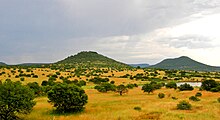
Two areas in KwaZulu-Natal have been declared UNESCO World Heritage Sites: the iSimangaliso Wetland Park and the uKhahlamba Drakensberg Park. KwaZulu-Natal is the birthplace of many notable figures in South Africa's history, such as Albert Luthuli, the first African, and the first person from outside Europe and the Americas, to be awarded the Nobel Peace Prize (1960) …
» Limpopo

Limpopo is a typical developing area, exporting primary products and importing manufactured goods and services. It is also one of the poorest regions of South Africa, especially rural areas. However the Limpopo has shown great improvements in the economy and in standard of living. A recent border shift with the Limpopo's wealthier neighbour, Mpumalanga, was effected to try and bring some wealth into the province …
» Mpumalanga

The Drakensberg Escarpment divides Mpumalanga into a westerly half consisting mainly of high-altitude grassland called the Highveld and an eastern half situated in low altitude subtropical Lowveld/Bushveld, mostly savanna habitat. The southern half of the Kruger National Park is in the latter region. The Drakensberg exceeds heights of 2000m in most places with this central region of Mpumalanga being very mountainous …
» Northern Cape

The Northern Cape was one of three provinces carved out of the Cape Province in 1994, the others being Western Cape to the south and Eastern Cape to the southeast. Politically, it had been dominated since 1994 by the African National Congress (ANC). Ethnic issues are important in the politics of the Northern Cape …
» North West

Much of the province of North West, South Africa consists of flat areas of scattered trees and grassland. The Magaliesberg mountain range in the northeast extends about 130 km (about 80 miles) from Pretoria to Rustenburg. The Vaal River flows along the southern border of the province …
» Western Cape

The Western Cape is roughly L-shaped, extending north and east from the Cape of Good Hope, the southwestern corner of South Africa. It stretches about 400 kilometres (250 mi) northwards along the Atlantic coast and about 500 kilometres (300 mi) eastwards along the Indian Ocean coast. It is bordered on the north by the Northern Cape and on the east by the Eastern Cape …

« SOUTH AFRICA • Discover South Africa


